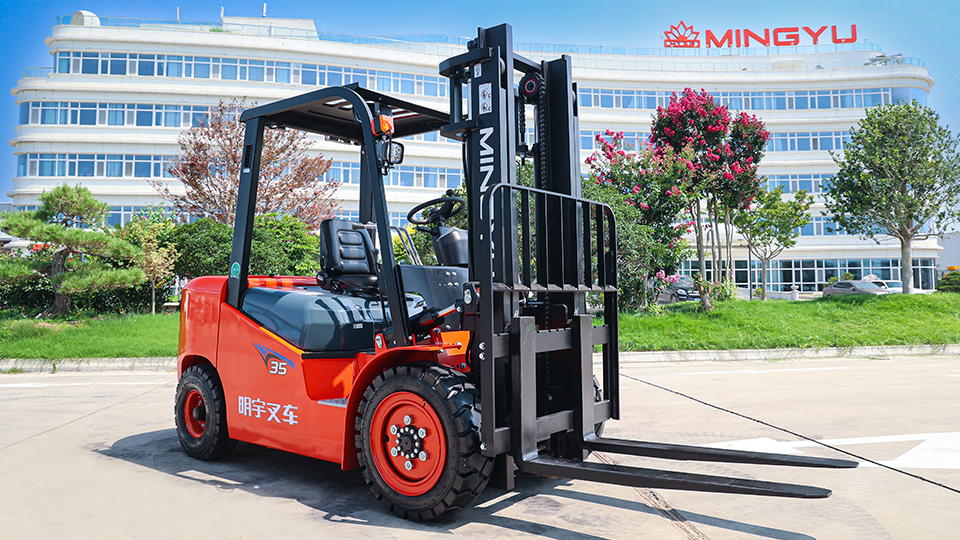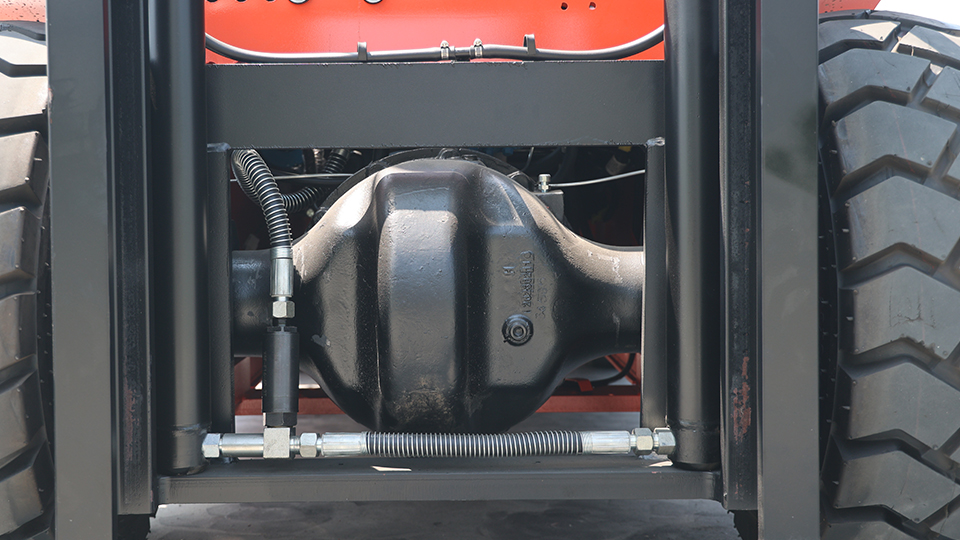
Introduction
Forklift trucks are the backbone of logistics, warehousing, and manufacturing operations globally. Their utility rests entirely on the integrity of their load-bearing components, chief among them, the forks. These critical attachments are subjected to immense, repetitive stress, and over time or due to severe impact, they can become bent, cracked, or damaged. When a bent fork is identified, a pressing question arises in the mind of a maintenance manager or facility owner: Can we straighten it and put it back into service?
The short answer, supported by engineering principles, regulatory standards, and manufacturer guidelines, is almost universally no, or at least, not without a highly specialized and legally precarious procedure that is generally deemed uneconomical and unsafe.
This 2000-word technical article will delve deep into the metallurgy, engineering mechanics, regulatory landscape, and safety implications surrounding the attempt to straighten a bent forklift fork. We will explore why the industry consensus is against this practice, what the accepted repair and replacement procedures are, and the catastrophic risks associated with ignoring these mandates.
I. The Anatomy and Metallurgy of a Forklift Fork
To understand the prohibition on straightening, one must first appreciate the design and material science behind a modern forklift fork.
A. Material Composition and Manufacturing Process
Forklift forks are not simple pieces of steel. They are highly engineered components, typically manufactured from specialized high-strength, low-alloy (HSLA) steel, such as AISI 15B37 or similar proprietary alloys. The goal is to achieve an optimal balance of strength, hardness, and ductility.

The manufacturing process is crucial:
Forging: The steel is hot-forged to shape the blank. This process aligns the grain structure of the metal along the length of the fork, concentrating the material strength where it is needed most—to resist bending stresses.
Welding (for Class Mounts): The mounting carriage (the upper hook and sometimes a lower heel) is welded to the main blade. This weld point is another critical, engineered stress area.
Heat Treatment: This is the most critical step. The entire fork is subjected to a precise, controlled heat treatment process, often involving quenching and tempering. This process refines the grain structure, relieves internal stresses from forging, and imparts the final mechanical properties, specifically the yield strength and ultimate tensile strength required for safe operation. The heel radius—the transition area between the horizontal shank and the vertical blade—is the zone of highest stress concentration and receives particular attention in this treatment.
B. The Significance of Yield Strength
The safety of a fork depends on its ability to handle a load without experiencing permanent (plastic) deformation. The yield strength is the point at which the material begins to deform permanently. A properly engineered fork operates within the material's elastic limit, meaning it returns to its original shape after the load is removed.
A bent fork, by definition, has been stressed beyond its yield strength and into its plastic deformation region. This permanent deformation has fundamentally altered the material's properties at the point of the bend, often in the crucial heel area.
II. The Technical Flaw in Attempting to Straighten
When a material is stressed past its yield point, its crystalline structure (grain) is permanently altered—a process known as work hardening or strain hardening. Attempting to straighten the fork introduces a second, opposing plastic deformation, compounding the initial damage and introducing new, potentially catastrophic weaknesses.
A. The Bending-Straightening Cycle and Material Degradation
Initial Bend (Damage): The original stress applied has stretched the metal crystals on the tension side of the bend and compressed them on the compression side, exceeding the metal's elastic capacity.
Straightening Attempt (Re-Damage): Applying heat and/or force to bend the fork back subjects the already damaged metal to a reverse cycle of plastic deformation. This process does not "heal" the material; it further strains the grain structure, leading to:
Loss of Ductility: The metal becomes more brittle and less able to absorb future impact or stress.
Introduction of Micro-Fissures: Microscopic cracks, or stress risers, form within the metal's grain boundaries. These are invisible to the naked eye but serve as initiation points for future catastrophic failure.
Localized Stress Concentration: The new stresses introduced during straightening are not uniform, creating new, unpredictable zones of high-stress concentration.
B. The Destructive Impact of Uncontrolled Heat
Any attempt to straighten a significantly bent fork invariably involves applying heat, typically with an oxy-acetylene torch, to make the metal pliable. This is arguably the most destructive aspect of the process.
The precise heat treatment that gave the fork its engineered strength is now undone:
Annealing/Softening: Uncontrolled, localized heating (above the critical transformation temperature) fundamentally changes the micro-structure of the steel. It effectively anneals the high-strength material, drastically reducing its yield strength and overall load-bearing capacity. The fork will appear straight but will be structurally compromised—it will be significantly softer and more prone to bending or catastrophic failure under its rated load.
Warping and Residual Stresses: Uneven heating and cooling during the straightening process introduce severe and unpredictable residual stresses within the fork structure. These internal stresses act as permanent "pre-loads" on the material, meaning a portion of the fork's rated capacity is already consumed before any external load is applied.
In short, a straightened fork is no longer the highly engineered component rated to lift a specific tonnage; it is a piece of compromised metal with a drastically and unknowably reduced capacity.
III. Regulatory and Standards Compliance
The practice of straightening a bent forklift fork is not just a technical risk; it is a direct violation of established safety standards and regulations in virtually all industrialized nations.
A. The ASME B56.1 Standard (United States)
In the U.S., the fundamental safety standard for powered industrial trucks is the ASME B56.1 - Safety Standard for Low Lift and High Lift Powered Industrial Trucks. This standard is clear and unequivocal regarding fork repair:
Section 8.23.4 (Modification of Forks): "Field modification of forks, such as by grinding, drilling, or heating, shall not be permitted."
Section 8.23.5 (Repair/Straightening): The standard mandates that only the original manufacturer or a firm with equivalent expertise can perform repairs that involve restoring the original alignment or shape. Crucially, any such repair must be followed by the original heat treatment process and a re-rating of the fork, along with comprehensive non-destructive testing (NDT), such as Magnetic Particle Inspection (MPI).
B. ISO Standards and International Context
International standards and national regulations (such as those under the European Union's Machinery Directive or Canada's CSA B335 standard) echo the same principle: any repair that alters the structural integrity or mechanical properties of a load-bearing component, particularly through heating or re-shaping, requires the component to be restored to its original specification, including full re-heat treatment and re-certification.
C. The Regulatory Barrier: Certification and Liability
The burden of compliance is the major deterrent. No standard shop possesses the necessary industrial heat-treating furnaces, controlled cooling systems, metallurgical testing equipment, and engineering expertise to meet the ASME/ISO re-certification requirements.
Furthermore, a facility that attempts an unauthorized straightening assumes full liability for any failure. If a straightened fork fails, causing injury, death, or property damage, the employer is demonstrably in violation of safety codes, making the defense against negligence virtually impossible. Insurance coverage may also be voided for equipment operating outside of manufacturer and regulatory specifications.
IV. The Proper Procedure for Fork Assessment and Retirement
When a fork is found to be bent or otherwise damaged, the maintenance procedure must strictly adhere to industry standards, which call for comprehensive inspection and, almost inevitably, replacement.
A. Non-Destructive Testing (NDT) - The Annual Inspection
Forks must be inspected at least annually, or immediately if damage is suspected. The inspection involves:

Straightness Check: The straightness of the blade and shank is checked against the manufacturer's specification. A common limit for deviation from straightness is 0.5% of the blade length. Any deviation exceeding this limit necessitates removal from service.
Heel and Blade Thickness: Wear is measured, typically at the heel—the point of highest wear. The standard retirement criterion is typically reached when the thickness is reduced by 10% from the original thickness. A 10% reduction in thickness reduces the fork's capacity by approximately 20%.
Crack Inspection: The fork is thoroughly inspected for cracks, especially at the heel radius, around the mounting hook, and along the welds. Magnetic Particle Inspection (MPI) is the definitive method for detecting surface cracks, which are often invisible to the eye. Any crack, regardless of size or location, requires immediate retirement of the fork.
Angle Check: The angle of the blade relative to the shank must be within the manufacturer's specified tolerance (typically within 90
B. The Inevitability of Retirement
If a fork is found to be bent beyond the 0.5% tolerance or has any structural cracking, the accepted and safest engineering decision is immediate retirement and replacement. The minor cost savings from a dubious straightening attempt are dwarfed by the potential cost of a catastrophic failure.
V. Conclusion: Risk vs. Reward
The question, "Can you straighten a bent forklift fork?" is an economic and safety calculation, not merely a technical one.
Technically, any piece of metal can be reshaped. However, an authorized, safe, and legally compliant straightening procedure requires industrial heat treatment, re-forging, non-destructive testing, and re-certification. This entire process is logistically complex, prohibitively expensive, and takes the fork out of service for an extended period.
In virtually all real-world scenarios, the cost of a new, certified fork—guaranteed by the manufacturer to meet the required load rating and safety factor—is a fraction of the cost and liability associated with a compromised, unauthorized repair.
The safety of personnel and the structural integrity of a load-handling operation depend on certified components. A straightened fork is a component that has had its engineered safety factor destroyed and replaced with an unknown, dramatically lower capacity. The industry consensus, enshrined in major safety standards (ASME, ISO), is a clear warning: Do not attempt to straighten a bent forklift fork. Retirement and replacement are the only paths that fulfill the ethical, regulatory, and technical requirements for a safe working environment.
Name: selena
Mobile:+86-13176910558
Tel:+86-0535-2090977
Whatsapp:8613181602336
Email:vip@mingyuforklift.com
Add:Xiaqiu Town, Laizhou, Yantai City, Shandong Province, China